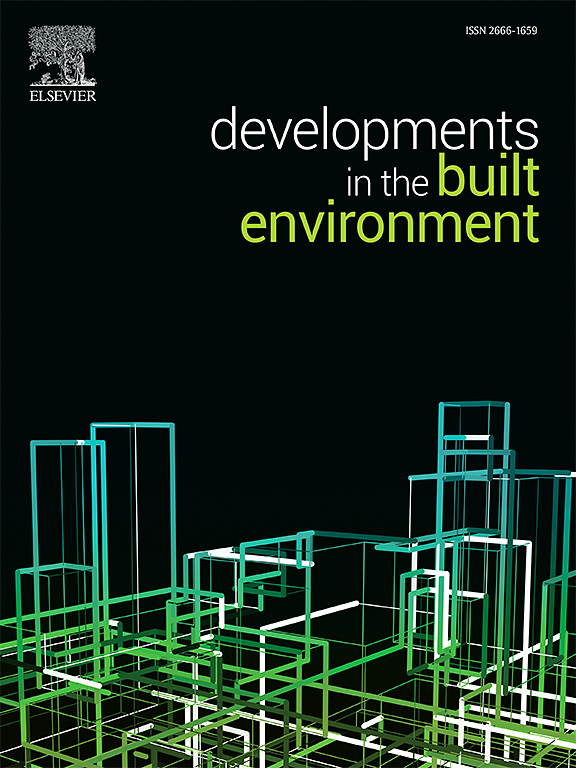轻质外立面HC3DP元素的材料特性和结构性能
IF 8.2
2区 工程技术
Q1 CONSTRUCTION & BUILDING TECHNOLOGY
引用次数: 0
摘要
本文研究了大跨度构件中空核3D打印(HC3DP)的结构性能和材料特性。该研究将HC3DP与传统的大规模材料挤压(ME)方法进行了比较,并探讨了不同的热边界条件对3D打印聚合物力学性能的影响。总共提出了三种类型的实验程序。对大型梁进行了拉伸试验、3次拉伸弯曲试验和4次拉伸弯曲试验。该研究强调了HC3DP在建筑应用中的潜力,特别是在高性能、特定场地立面的建设中。研究结果强调了3D打印过程规划和设计的重要性,强调了打印方向在决定3D打印立面元素的结构行为和性能方面的关键作用。此外,基于实验结果,本文提出了计算3D打印立面最大跨越距离的理论模型。结果表明,HC3DP是一种很有前途的立面建造技术,能够制造出美学独特、材料高效的3d打印立面,比传统的ME方法具有更好的结构能力。本文章由计算机程序翻译,如有差异,请以英文原文为准。
Material characterization and structural behaviour of HC3DP elements for lightweight facades
This paper investigates the structural behavior and material characteristics of Hollow-Core 3D printing (HC3DP) for large-spanning elements. The study compares HC3DP with conventional large-scale Material Extrusion (ME) methods and explores the influence of varying thermal boundary conditions on the mechanical properties of the 3D printed polymer. In total three types of experimental procedures are presented. Tensile experiments, 3 PT bending tests, and finally, 4 PT bending tests of large-scale beams are conducted. The research highlights the potential of HC3DP in architectural applications, particularly in the construction of high-performance, site-specific facades. The findings underscore the importance of planning and design for the 3D printing process, emphasizing the critical role of printing direction in determining the structural behavior and performance of 3D printed facade elements. Additionally, the paper presents a theoretical model for calculating for the maximum spanning distance of 3D printed facades, based on the results obtained from the experiments presented. The results demonstrate that HC3DP is a promising technology for facade construction, enabling the fabrication of aesthetically unique and material efficient 3DP facades with a better structural capacity then comparable conventional ME methods.
求助全文
通过发布文献求助,成功后即可免费获取论文全文。
去求助
来源期刊

Developments in the Built Environment
Multiple-
CiteScore
7.40
自引率
1.20%
发文量
31
审稿时长
22 days
期刊介绍:
Developments in the Built Environment (DIBE) is a recently established peer-reviewed gold open access journal, ensuring that all accepted articles are permanently and freely accessible. Focused on civil engineering and the built environment, DIBE publishes original papers and short communications. Encompassing topics such as construction materials and building sustainability, the journal adopts a holistic approach with the aim of benefiting the community.
 求助内容:
求助内容: 应助结果提醒方式:
应助结果提醒方式:


